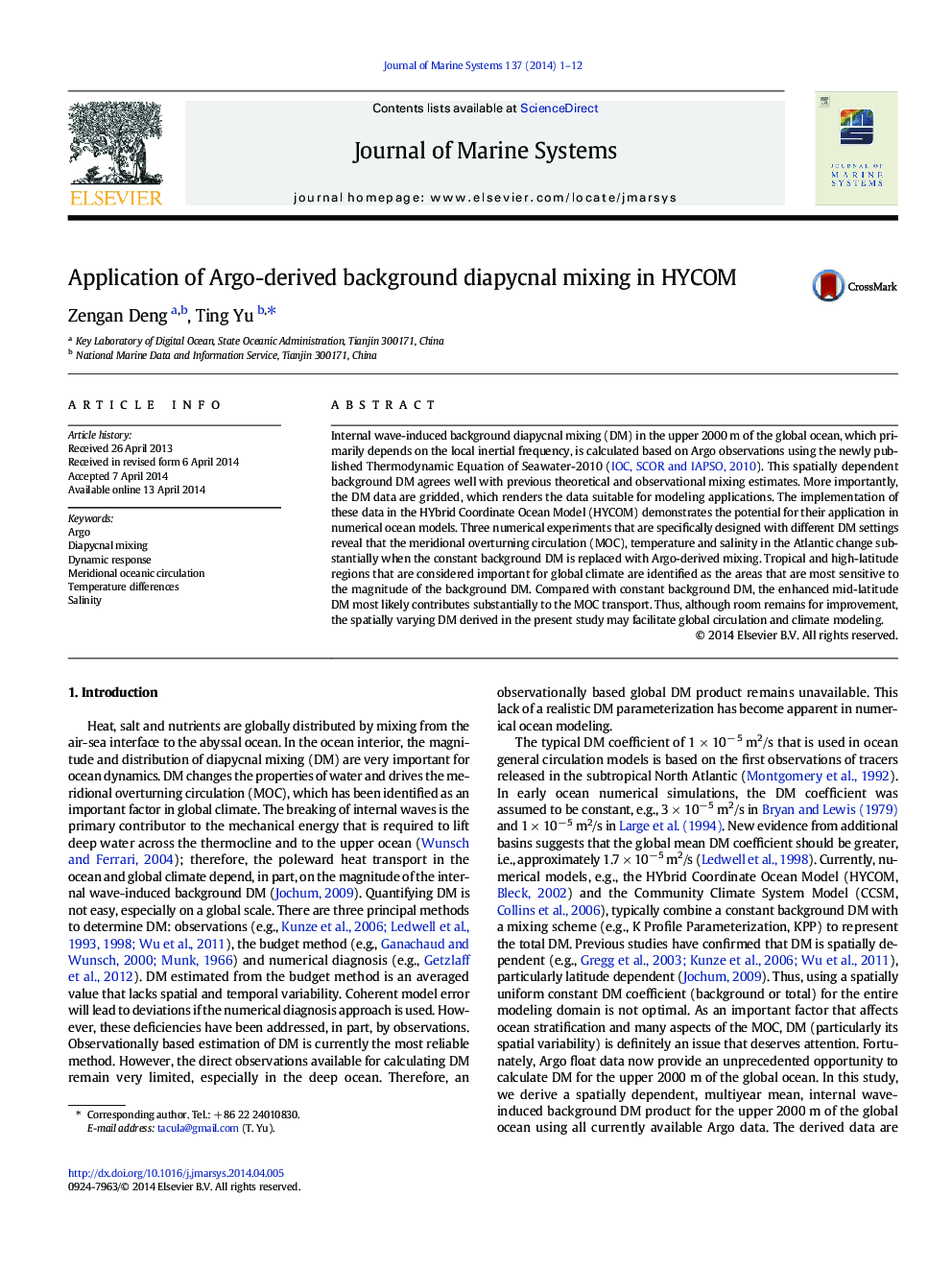| Article ID | Journal | Published Year | Pages | File Type |
|---|---|---|---|---|
| 4548027 | Journal of Marine Systems | 2014 | 12 Pages |
•Derive background diapycnal mixing over the upper 2000 m ocean using Argo data•Application of Argo-derived background diapycnal mixing in HYCOM•Present the responses of ocean dynamics to the change of diapycnal mixing
Internal wave-induced background diapycnal mixing (DM) in the upper 2000 m of the global ocean, which primarily depends on the local inertial frequency, is calculated based on Argo observations using the newly published Thermodynamic Equation of Seawater-2010 (IOC, SCOR and IAPSO, 2010). This spatially dependent background DM agrees well with previous theoretical and observational mixing estimates. More importantly, the DM data are gridded, which renders the data suitable for modeling applications. The implementation of these data in the HYbrid Coordinate Ocean Model (HYCOM) demonstrates the potential for their application in numerical ocean models. Three numerical experiments that are specifically designed with different DM settings reveal that the meridional overturning circulation (MOC), temperature and salinity in the Atlantic change substantially when the constant background DM is replaced with Argo-derived mixing. Tropical and high-latitude regions that are considered important for global climate are identified as the areas that are most sensitive to the magnitude of the background DM. Compared with constant background DM, the enhanced mid-latitude DM most likely contributes substantially to the MOC transport. Thus, although room remains for improvement, the spatially varying DM derived in the present study may facilitate global circulation and climate modeling.
